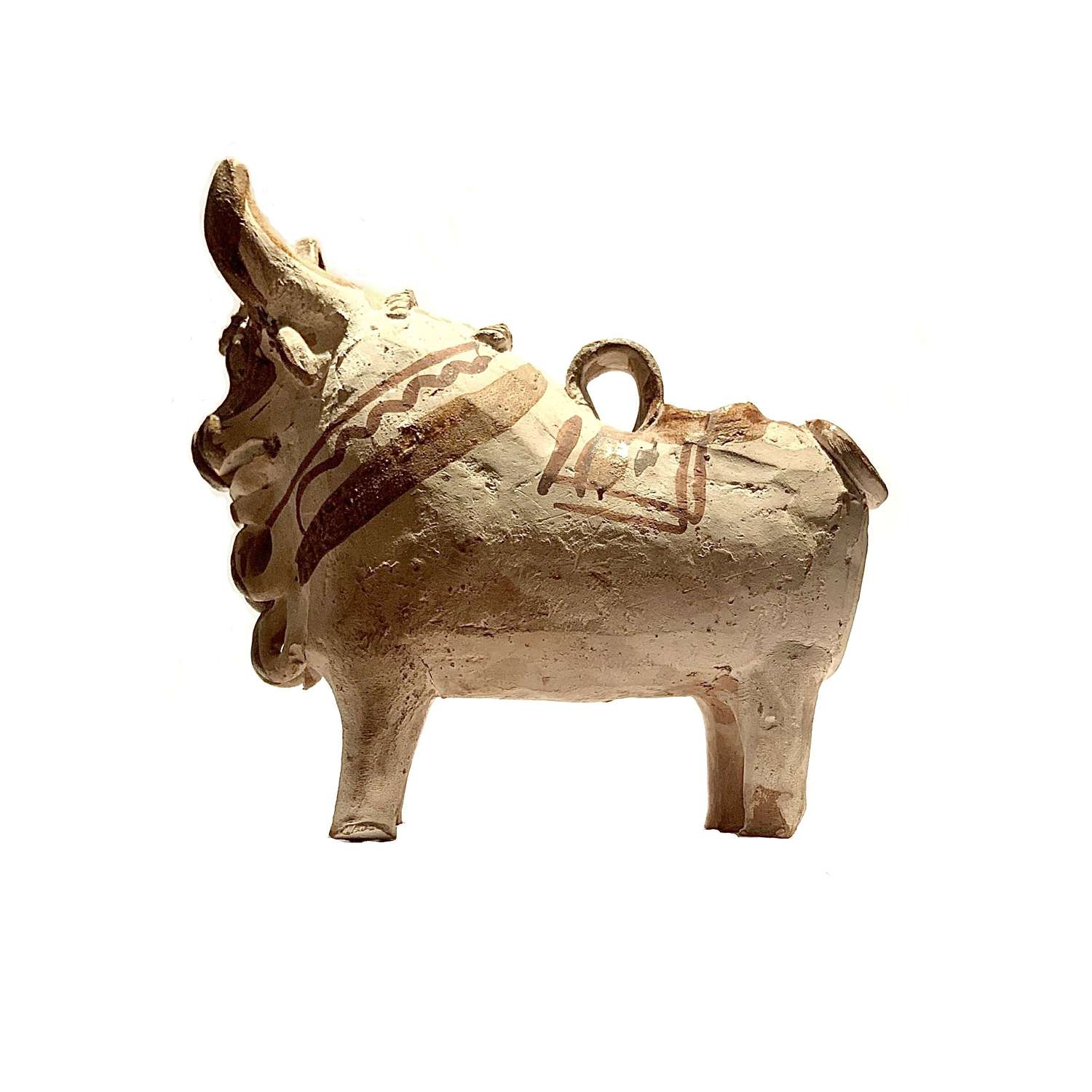
Code: 11119
Dimensions:
A Good Early Folk-Art Model of a “Torito de Pucará” (Pucara Bull)
Unglazed fired terracotta, decorated with ochre and umber slip
Pucara, Lampa Province, Peru
Circa 1920's
Measures:-
17.2 cm high x 19 cm long x 7 cm wide
Provenance:-
The property of an Oxford academic.
The “Torito de Pucará” (literally 'Little Bull of Pucara') is a representation of the bulls used during festivals in Pucara, southern Peru. The town is famous for its ceramics and these models are a staple of the local pottery industry. They follow in the tradition of Pre-Colombian pottery and have been made as souvenirs since the early 20th Century. This particular bull is an early example - those of more recent manufacture are crudely made and brightly coloured.
Historically the bulls used in Pucara's festivals had spices rubbed onto their faces and noses which irritated them and made them agitated; they licked their noses and their eyes bulged. The bulls are depicted (as here) with large, inflamed eyes and with their tongues licking their noses. Other symbols on the pottery, such as the loop handle, the hole and the spiral pattern on the bull's shoulders have various interpretations in Andean folklore. They were also used as containers for votive offerings in a syncretism between Catholic and native Inca religious traditions.



